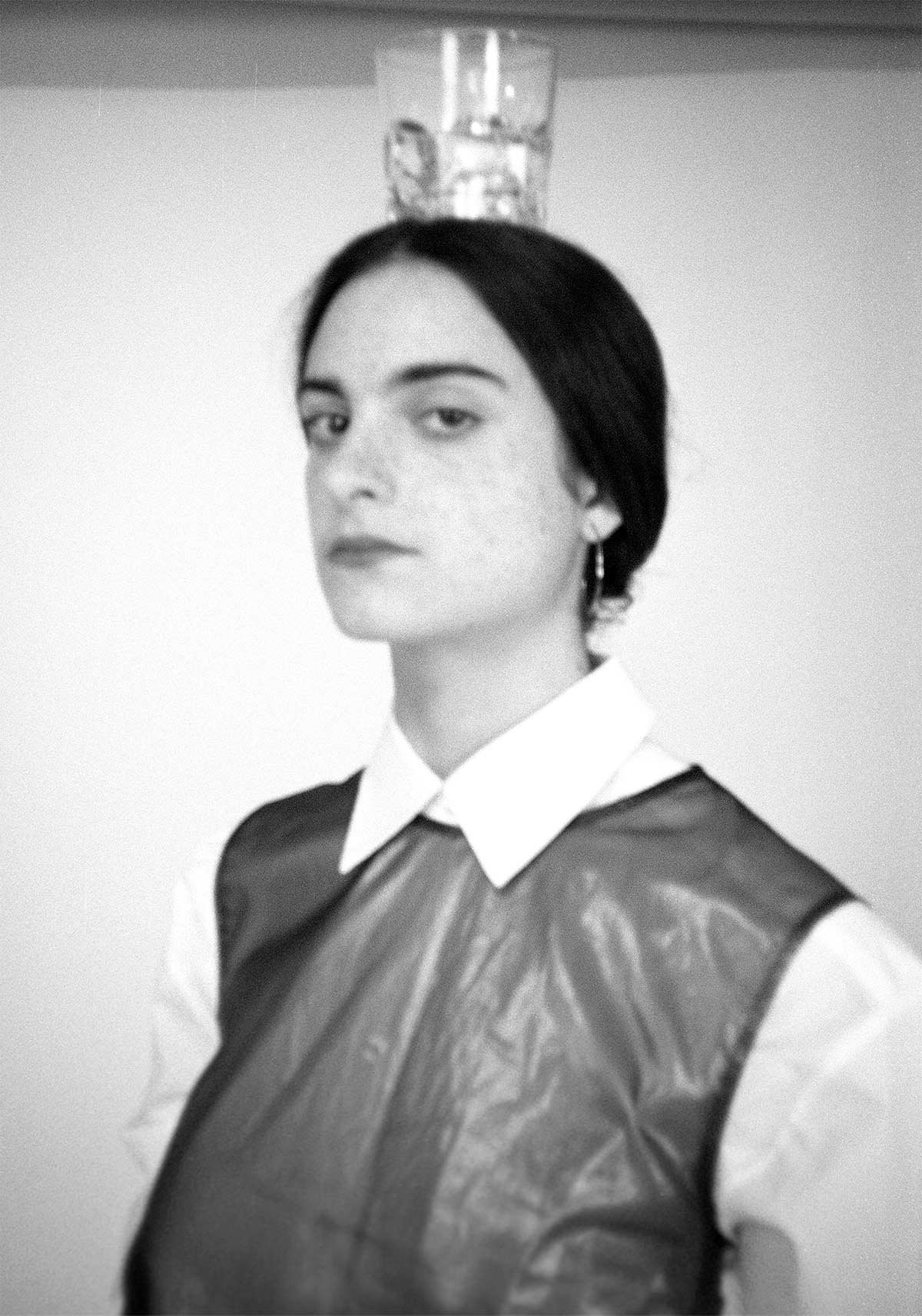These Sculptures Will Disappear
Submission by Sara Varela and Marta Champán Words by Nastasia Khmelnitski
These Sculptures Will Disappear, questions the contrasts between dynamics and stillness, the physical and the ephemeral, the human and the object. The extensive examination of the behavior comes through the observance of interaction with objects, experimenting with styling and hairstyling, and the body position. The glasses are introduced as empty objects (or objects filled with liquid) to produce an interaction between the main character and the object. The task of creating a human sculpture invites the intention to eradicate the emotional background to build space for the research.
Sara Varela and Marta Champán conceptualized the idea for These Sculptures Will Disappear. Inspired by Erwin Wurm's series One Minute Sculptures dating back to 1997, the team explores the complex relationships between the human and the surrounding objects. The story is presented through photography and a short analog video to demonstrate ephemeral human sculptures.
We speak with Marta and Sara, the directors of the shoot, to find more about the initial inspiration, the way to create spontaneous sculptures, the movement and stillness.
Directed by Sara Varela and Marta Champán Performed by Maddi Aguilar Cinematography Marta Champán Art Direction Sara Varela MUA Chiharu Wakabayashi Ph Assistant Ane Arenaza
Special thanks to Julia Carbonell Asier Rodríguez
‘Erwin has the ability to treat very timeless issues and the existential doubts of the human being in a very light way and even from a humorous perspective.’
— Marta Champán
Erwin Wurm, in his “One Minute Sculptures” 1997, approaches the topic of human sculptures through mediums of photography, video, and performance art. For the story, you have decided to work with photography and video as well. What did you find interesting, or what were you most curious about in Erwin Wurm’s project?
Marta: Curiously, Sara and I had arrived at Erwin Wurm in different ways at the same time. We were very inspired by his concept of “disposable culture.” Erwin has the ability to treat very timeless issues and the existential doubts of the human being in a very light way and even from a humorous perspective, so his work, One Minute Sculptures, seemed to us a very good starting point to develop our project and experimenting with it to see what the results would be.
‘Our aim was to create freely with the elements and capture spontaneous 'sculptures.' We wanted neutrality in her gestures and movements since the ‘sculptures’ spoke for themselves.’
— Sara Varela & Marta Champán
Let’s speak about the process of working with the performer, Maddi Aguilar. What were some directions and guidance on set you discussed? What was the main aspect in terms of the atmosphere, the movement, or lack of the movement you wanted to achieve?
Sara and Marta: Maddi is mainly a model, but she has a very multidisciplinary character. It was very special to work with her due to the way we visualized her in the project from the first moment, and the response we got from her; she was totally open to experimenting. Our aim was to create freely with the elements and capture spontaneous 'sculptures.' We wanted neutrality in her gestures and movements since the ‘sculptures’ spoke for themselves, but at the same time, her expression provided a special essence that greatly enriched the images. She was so inspiring to us.
‘I like to capture the movement, but the lack of it is also interesting to me: the detail, the peace, and visual harmony (without distractions), studying the object, and their natural behavior.’
— Marta Champán
‘The idea was of Maddi to be captured in the process of transformation. If you put on a piece of clothing, you can either define or distort your figure.’
— Sara Varela
In the project, you researched the contrasts of static and the dynamic both in terms of the story depicted in the frame and the medium you decided to use, the analog video and film photography. What were some of the realizations coming from the way the human interacts with the objects when comparing the interaction in video versus photography?
Marta: When I work on an audiovisual project, I like to capture the movement, but the lack of it is also interesting to me: the detail, the peace, and visual harmony (without distractions), studying the object, and their natural behavior.
In this case, it was essential to pay attention to the static since the result could be unexpected, obviously, there were some guidelines to follow, but when we got the 'sculptures,' a lot could have happened after that minute. Experimenting is something I learn a lot from.
Styling and art direction are very unique to the project. Styling decisions produce a focus on an ephemeral body, through the softness of fabrics, allowing for the body to create the right shape. What was important in the choice of fabrics and colors?
Sara: What I like best about Erwin’s work is this concept of the work in progress as another sort of final work. Here, the idea was of Maddi to be captured in the process of transformation. If you put on a piece of clothing, you can either define or distort your figure, and it was interesting to get there through a piece as common in our daily lives as a shirt. Fabrics were meant to support different shapes for the performer, while color was silent, not to keep the attention out of the form.







